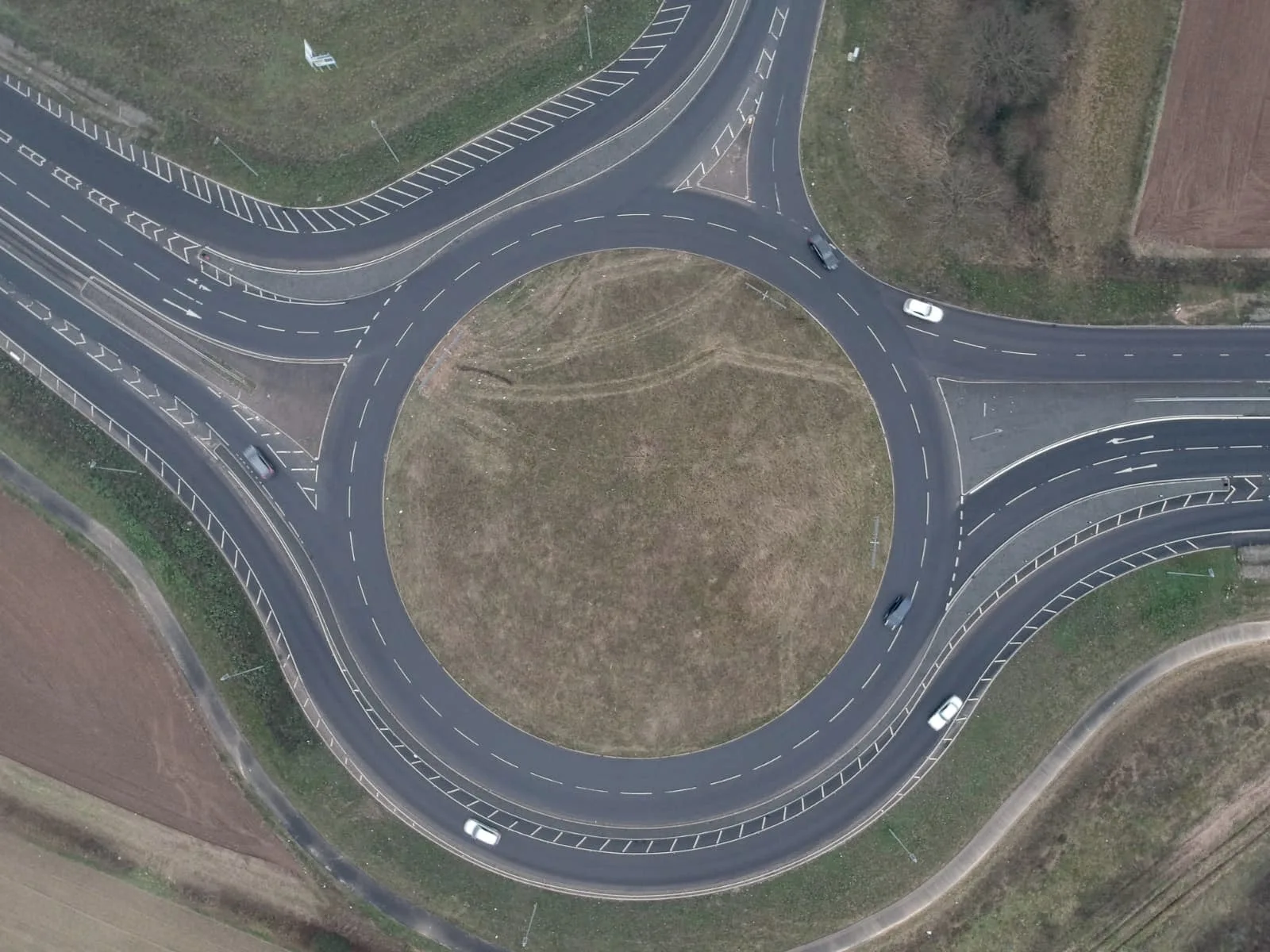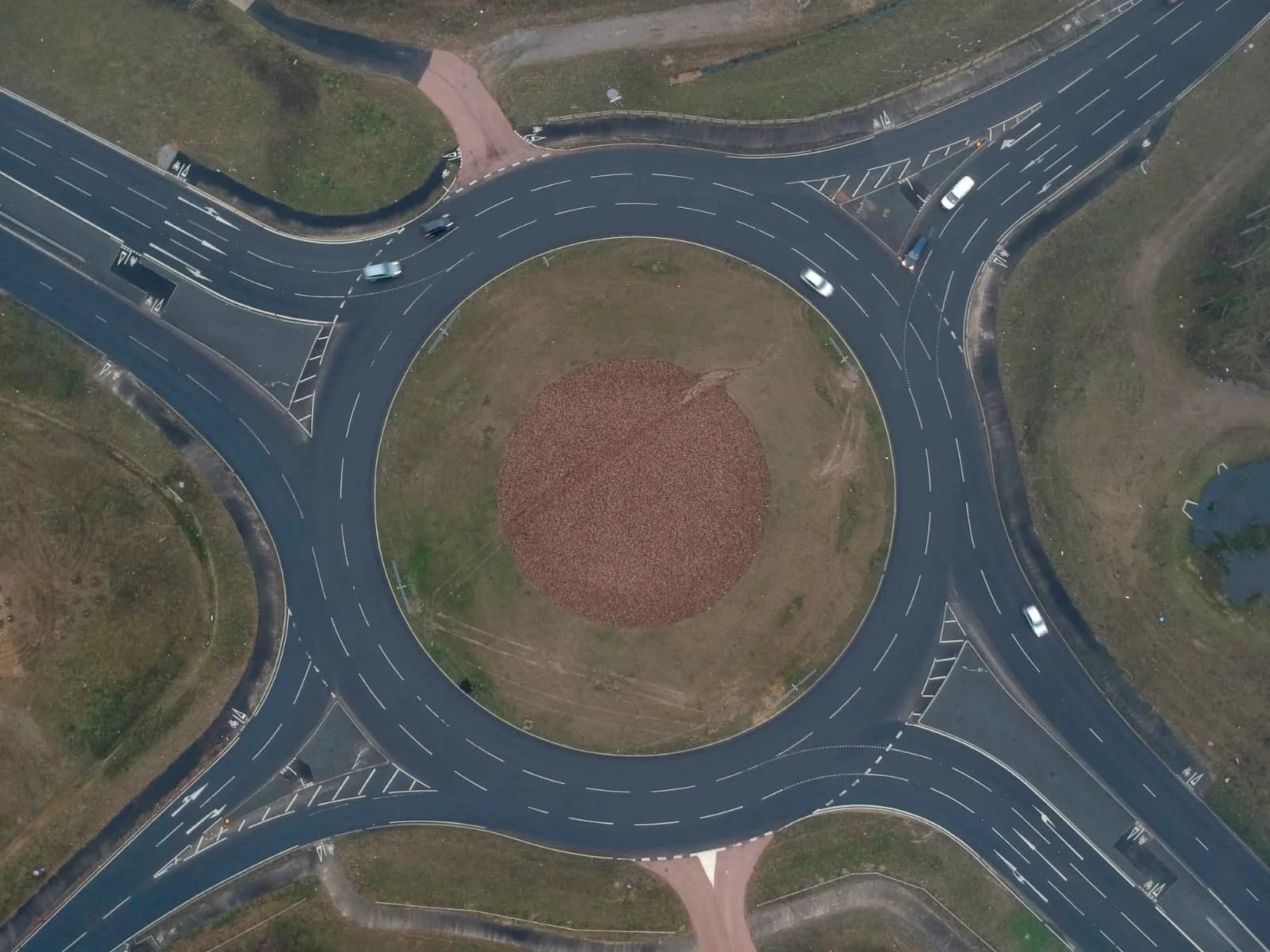It has been one year since the final section of the often-controversial Norwich Northern Distributor Route (NDR), now known as the Broadland Northway, opened.
The 20km-length dual carriageway runs from the A47 at Postwick, east of Norwich, to the A1067 Fakenham Road north of Taverham.
As well as initial work on the route, Norfolk County Council recently carried out maintenance on some of the roundabouts. This work included new countdown signs and adjustments to lane markings.
Worried about using the NDR?
For learners and more experienced drivers alike, thinking about using the NDR and its roundabouts can provoke a whole host of feelings, from nervousness and self-doubt to annoyance and frustration at other drivers. And the sight of abandoned vehicles and skid marks on the roundabouts has not been uncommon over the past 12 months.
How-2-Drive’s founder, Howard Floyd, said problems on the roundabouts, including collisions, are down to driver error, but that there are aspects of the route that can make it more challenging.
Elsewhere in the area we have dual carriageways like the A47, but the big difference with driving on that road is you have nice long, safe, entry slip roads. To get onto most sections of the NDR you have to use a roundabout.
A lot of people also seem to be unprepared for the shape of some of the roundabouts; it sounds funny but they are very round so the exits can be quite sharp turns.
Howard Floyd

Here is Howard’s take on the top reasons for problems on the Norwich NDR roundabouts, and how to avoid them.
Lane discipline
Most problems on the NDR roundabouts are caused by people straying out of their lane without enough warning. This forces other drivers to suddenly brake or change course. More signs have been added on the approaches to show the correct lane for each exit. There are also markings on the road surface, so pay attention before you get to the roundabout.
The left lane may be for both turning left and going straight. But on the NDR some drivers start in the left lane and drift into the middle lane as they cross the roundabout. If there is already a vehicle in the middle, this forces that vehicle to react. They’re left with no choice but to either to brake or change lanes themselves. If someone else is alongside them in the third lane, that driver then has nowhere to go.
Likewise, trying to move into the left lane to exit, without properly checking who is already in that lane can also cause problems.
Think about how your actions can affect others
Ineffective mirror use is also a big contributor to collisions. Some drivers indicate and begin to move without really noticing who else is around them. Again, this sets off a ripple effect where other people have to react to avoid an accident.
If you want to move over to a lane on the left but are blocked, it’s safer to loop once round the roundabout and try again, than to try and force your way in. Make sure you always use your indicators to let other drivers know your intentions.

Speed on approach
Why do so many vehicles end up stranded on the middle of the roundabouts? In most cases, it must be a lack of concentration and ignoring the signs on approach, meaning they are entering the junction too fast. You should be able to slow down to a stop without giving yourself or passengers whiplash.
For the majority of the Norwich NDR, the national speed limit of 70mph applies. However, Norfolk County Council is convinced that some drivers are exceeding the limit.
High-speed entry onto the roundabouts causes drivers to drift out of lane, and possibly cut other people up. Some collisions caused by poor lane discipline could be avoided if vehicles weren’t travelling so fast. This excessive speed makes it impossible for them to react in time.
Lack of judgement
It’s really important to be able to judge a safe gap and know when to go onto the roundabout. Some people pull out when they shouldn’t because they assume someone in the left lane will exit the roundabout before passing. The problem is, the driver in the left lane may be going straight ahead instead.
Fast-moving traffic on the roundabout means you have to be able to match the speed of the vehicles on there once you decide to go. Failure to get the timing right is what often leads to side impacts.
Looking for extra help?
If you’re already taking lessons, or planning to, with How-2-Drive, lessons in and around Norwich could involve driving on the NDR in preparation for your test. Your instructor will ensure you’re ready to tackle the roundabouts before taking you on the dual carriageway.
If you’re already driving, and feel like you could do with a confidence boost to deal with the NDR, and any other tricky routes you face in and around Norfolk, How-2-Drive can also offer bespoke lessons.
As well as the Pass Plus and Advanced Driver Training courses we offer, one of our instructors can put together lessons that meet your individual needs.
Just get in touch, we’d love to hear from you.
